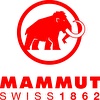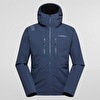Seb Berthe flashes Le Voyage at Annot in France

 1 / 1
1 / 1 Robbie Phillips
Robbie Phillips
Seb Berthe has made a superbly impressive flash ascent of Le Voyage (8b+/E10) at Annot in France the 40m test piece established in 2017 by James Peason and considered one of the hardest trad climbs in France. The route lay dormant until 2021 when Barbara Zangerl, Jacopo Larcher and Siebe Vanhee, made the first repeats, and others who have since followed suit include Symon Welfringer, Jonas Schild, Steve McClure and, these last few days, Ignacio Mulero, Robbie Phillips and Mathieu Miquel.
After making only the second ascent of the Heart Route in 2016 on El Capitan, Berthe burst onto the scene three years later with his free ascent of The Nose on El Capitan. He has since made a name for himself with his questionable choice of lycra and indisputably fast repeats of hard multipitches such the Alpine Trilogy in 2020, Fly (8c, 550m) on Staldenfluh in Switzerland's Lauterbrunnental and Arco Iris (8c+, 200m) at Montserrat in Spain. It goes without saying that this is the fastest ascent of Le Voyage to date and after Alexander Megos' first-go ascent of The Path at Lake Louise in Canada in 2016, one of the hardest flash ascents all-time.
Seb, congratulations! Le Voyage flash! That's quite something! When did you first think about flashing this route?
Well I first considered climbing it after reading about James doing the first ascent back in 2017. The route looked amazing, as did the rock. Then when I saw the video of Jacopo, Siebe and Babsi I began to think that giving it a ground-up attempt would be a nice challenge. And from that moment on, in the back of my mind I kept thinking that I might even try to flash it.
How did it come about now?
I've been wanting to visit Annot for a long time and when Robbie Phillips told me he wanted to try the route this spring, I knew it could be a good opportunity to give it a proper flash go. My plan was to go with him, watch him climb the route and get as much info as I could before making a ground-up flash attempt.
How long did you spend studying the line?
I spent two days at Annot at the start of this week. One entire day was spent watching Robbie and Mathieu Miquel working the route and of course I tried to get as much beta as I could: the moves, the gear, the rests, photos, videos, everything imaginable. I almost decided to try it that day but I told myself to be patient. The next day I went for it.
So how much did you know?
Before starting the attempt I basically knew everything about the route. Almost everything I'd say. I knew all the pro, organised my harness with the gear on the right side and in the right order, visualised all the sequences, move by move. The only thing I didn't know was which beta I wanted to use at the crux: there are different ways of the doing the crux, and before setting off I hadn't made up my mind. So I knew I'd have to make some hard choices while climbing!
Evidently this is precisely what you did!
Yes. During the ascent it was quite quiet, no one actually talked very much. Robbie didn't say much, Mathieu who was belaying me didn't either. I'd asked them to tell me if they saw me make some mistakes, so that perhaps I would change the beta, but they actually didn't say much, apart from on the final bit. The route finishes up a crack which isn't that hard, perhaps only about 7a, but the climbing is definitely a bit tricky and Robbie who was on the fixed rope filming me told me where to go.
How big of a fight was it?
The climbing went quite well really. Actually it didn't start well because I fell on my second 7a warm-up. And then when I was on the route I slipped on one of the starting moves and almost fell off, but I didn't. The first section is like a 7a crack and I didn't climb well at all, I was shaky and nervous. But then you get to a good ledge where you can rest and refocus, which is what I did before committing to the hard climbing. And here I climbed well, fast, without hesitation. I entered a really good flow and I also felt that I had a good power margin, I was never really at my limit. And I managed to remain really focused, also while placing all the gear.
How long did it take?
Oh I don't know. Perhaps 40 minutes? I used all the rests and took my time, but on the hard sections I think I climbed pretty fast.
Have you flashed other hard stuff in the past?
My hardest sport climb flash was Mind Control (8c) at Oliana and my hardest onsight is 8b+ in Mexico. Of course, I've flashed some hard pitches high up on multi-pitches, also on gear, like on El Cap. But this is the first time I've really studied a route meticulously, getting as much beta as possible before the try.
You mentioned you were never really at your limit. You climbed your second 9a+, La Rambla, in January, while last year you got excruciatingly close to repeating the world's hardest big wall climb, Dawn Wall on El Capitan. You're evidently on form!
It is hard for me to give an opinion about the grade since I was climbing flash and I don't have much experience with E grades, but I have the feeling that the route is quite easy for 8b+. Having said that, I also have to admit that I feel in really good shape at the moment. Time will well.
So how do rate this ascent compared to your other climbs Seb?
For me personally it's a really great achievement. I'm really proud of my climbing, but also of all the work I put in before setting off. And I'm also proud that I dared to go for a flash attempt in the first place.
By which you mean...
Daring to do something is never easy, big goals can be very frightening. I was worried and nervous. Conditions were not that good since it was warm, but I dared to give myself the chance!
Berthe thanks: SCARPA



 Copia link
Copia link





























